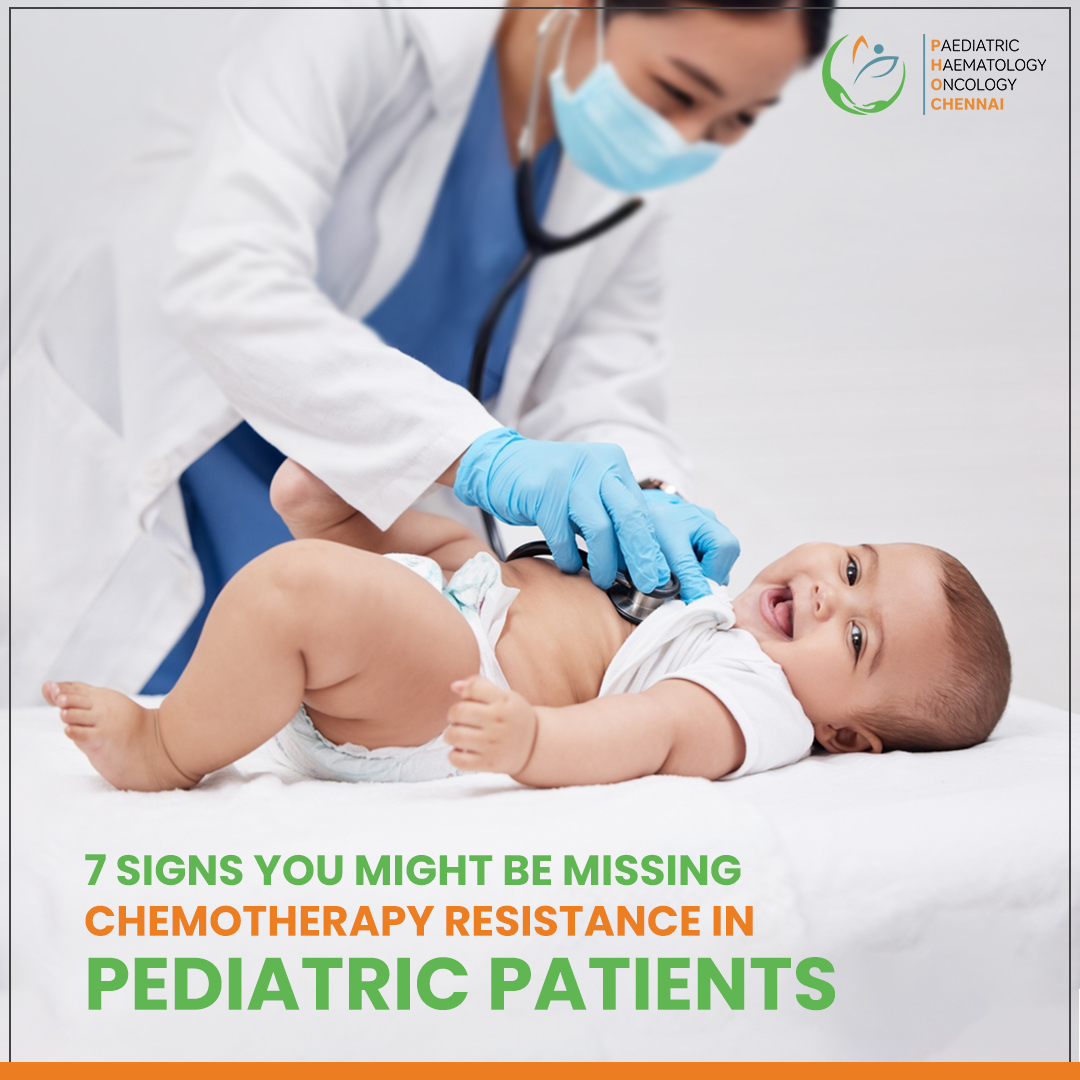7 Signs You Might Be Missing Chemotherapy Resistance in Pediatric Patients
Despite advances in pediatric cancer treatment, chemotherapy resistance remains a leading cause of treatment failure and relapse. The earlier it is detected, the greater the chance of adapting the therapeutic plan and improving outcomes. However, resistance often develops insidiously, and its signs can be mistaken for delayed response or post-treatment complications.
Here are seven key clinical and laboratory signs that may suggest emerging or established chemotherapy resistance in pediatric patients, and what you can do next.
1. Persistent Minimal Residual Disease (MRD) After Induction
In acute lymphoblastic leukemia (ALL), MRD is one of the strongest predictors of relapse. Children with MRD ≥0.01% after induction have significantly higher relapse rates compared to those who clear MRD early in therapy.
Detectable MRD suggests that leukemic clones are evading the cytotoxic effects of induction chemotherapy and may harbor resistance mutations or protective microenvironment niches.
What to look for: MRD detected by flow cytometry or PCR after induction or consolidation phases.
Consider intensifying therapy, switching to a high-risk protocol, or early referral for hematopoietic stem cell transplantation. Enrollment in trials testing targeted therapies such as bispecific antibodies should be evaluated when appropriate.
2. Lack of Expected Tumor Shrinkage on Imaging
In solid tumors such as neuroblastoma, rhabdomyosarcoma, or osteosarcoma, delayed or minimal radiographic response by mid-treatment often correlates with unfavorable outcomes. A lack of tumor volume reduction may reflect cellular resistance mechanisms or impaired drug delivery.
What to look for: Failure to achieve ≥50% reduction in tumor volume by midpoint of protocol therapy, based on RECIST or other disease-specific imaging criteria.
Early surgical consultation, repeat biopsy to assess tumor viability or necrosis, or adjunct PET imaging may be needed. These help distinguish between scar tissue and active disease. A change in chemotherapy regimen should be considered based on histologic and imaging findings.
3. Repeated Isolated Extramedullary Relapse
In diseases like ALL, isolated central nervous system (CNS) or testicular relapse can be a manifestation of chemoresistant subclones hiding in sanctuary sites. These sites are often shielded from systemic chemotherapy by biological barriers, allowing minimal residual disease to persist and eventually relapse.
What to look for: Symptoms such as persistent headache, cranial nerve palsies, vomiting, or painless testicular swelling during remission.
Evaluation should include lumbar puncture with cytology and flow cytometry, and testicular ultrasound if indicated.
Therapy should include site-specific intervention (e.g., intrathecal chemotherapy, cranial or testicular radiation) along with systemic re-induction. Additional immunotherapies may be required for systemic control.
4. Clonal Evolution or Cytogenetic Changes on Relapse
The emergence of new cytogenetic abnormalities at relapse indicates selective pressure from chemotherapy and survival of resistant clones. In acute myeloid leukemia (AML), the appearance of FLT3-ITD or monosomy 7 at relapse typically indicates a poorer response to standard re-induction.
What to look for: Differences in karyotype, FISH, or next-generation sequencing (NGS) between diagnosis and relapse samples.
Comprehensive molecular profiling should guide a shift to targeted therapies, including kinase or apoptosis pathway inhibitors. Consider referral to a precision oncology program or early-phase clinical trial when applicable.
5. Increasing Transfusion Requirements Despite Normal Marrow
Patients with leukemia who remain in morphologic remission but require escalating transfusion support may have early molecular relapse or suppression from a chemoresistant clone not yet visible on standard diagnostics.
What to look for: Persistent anemia, thrombocytopenia, or neutropenia with a normal-appearing bone marrow and no evidence of active infection.
Repeat MRD testing and marrow evaluation are warranted. This pattern may represent subclinical relapse. If confirmed, therapy should be escalated, and transplantation or clinical trials considered depending on risk stratification.
6. Unexpected Toxicity Without Therapeutic Effect
High levels of treatment-related toxicity in the absence of clinical or imaging response suggest pharmacogenomic resistance, where drug delivery is adequate but the tumor is intrinsically unresponsive.
What to look for: Recurrent mucositis, prolonged cytopenias, organ dysfunction, or other grade 3–4 toxicities without corresponding tumor regression.
Review of pharmacogenomic markers (e.g., TPMT, NUDT15) and therapeutic drug monitoring may clarify drug metabolism issues. A switch in agents, adjusted dosing, or alternative therapies may be necessary to avoid ineffective toxicity.
7. Early Relapse Within 6 Months of Completing Therapy
Relapse shortly after completing planned therapy is often driven by inherent resistance rather than reactivation of previously sensitive disease. These cases typically reflect the survival and outgrowth of chemoresistant clones.
What to look for: Return of disease signs or symptoms within six months of completing chemotherapy or maintenance.
These cases should be considered high-risk and treated accordingly. Fresh biopsy and molecular profiling should be used to guide the selection of salvage regimens. In hematologic malignancies, CAR-T therapy or early stem cell transplantation may offer the best chance of durable control.
Final Thoughts
Chemotherapy resistance in pediatric cancer is complex, multifactorial, and often detected late. Recognizing these early signs, persistent MRD, stagnant imaging response, sanctuary site relapses, evolving cytogenetics, unexplained cytopenias, toxicity without response, and rapid relapse, can help redirect therapy and improve prognosis.
Are you regularly screening for early resistance markers in your pediatric patients? Use MRD, imaging benchmarks, and evolving lab trends to stay ahead of chemoresistance. Don’t wait for full relapse, adjust therapy early and involve multidisciplinary input when red flags appear.






Comments